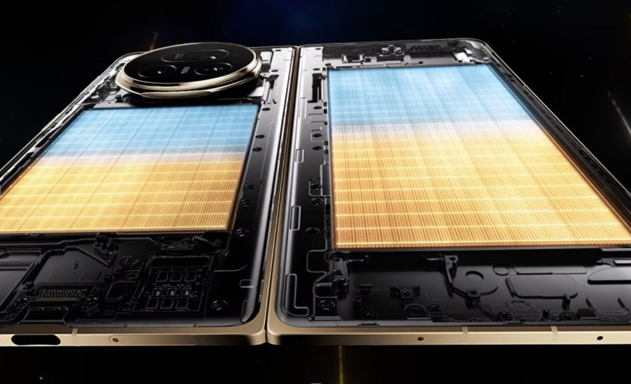Is Your Smartphone Slowing Down?

A smartphone is a vital tool in our daily lives, promising seamless communication and productivity. However, when these devices slow down, frustration quickly builds. Understanding what causes this slowdown can be key to revitalizing performance. This guide focuses on identifying signs of a sluggish phone, uncovering root causes, and offering practical solutions. By taking steps from clearing cache to managing background apps, you can restore your smartphone’s speed and efficiency. Let’s explore how expert-recommended methods can transform your smartphone experience and keep it running smoothly.
Signs Your Phone is Slowing Down
A smartphone showing signs of slowing down usually presents noticeable symptoms. It starts lagging when opening apps, multitasks inefficiently, and may display network delays. Additionally, the battery drains faster, and the phone heats up, especially under light use.
Lag When Opening Apps and Multitasking
When trying to open applications, the phone hesitates, taking longer than usual to respond. Often, this lag becomes glaring while switching between apps, making multitasking cumbersome. These delays disrupt productivity and indicate underlying issues needing attention. One major cause can be excessive app installations and a cluttered storage space, slowing app response time. Users must evaluate installed apps, identifying ones no longer needed, thus streamlining operations. A structured approach to app usage can vastly improve multitasking efficiency.
Slow Browsing, Network Delays, and Weak WiFi Performance
Browsing the web can become an ordeal with slow-loading pages and intermittent connection drops. These network delays are often due to weak WiFi signals or congestion. Assessing your network’s strength and ensuring a reliable connection are crucial. Deficiencies in browsing speed can be traced to both software inadequacies and hardware limitations. Updating software and ensuring well-placed WiFi routers can mitigate performance issues. Additionally, investigating data consumption can reveal apps that monopolize bandwidth, disrupting service fluidity.
Battery Drains Fast or Phone Heats Up Under Light Use
A rapidly draining battery and overheating signify underlying strain on processing capabilities. This can result from energy-consuming apps running quietly in the background. Excessive heat under light use often indicates that the phone’s resources are spread thinly across tasks. Monitoring battery usage via settings can reveal energy-hogging applications. Curtailing unnecessary activity by optimizing settings can reduce unnecessary power drain, maintain a cooler device, and extend battery life. Smartphones designed with advanced energy-saving software, such as the new HONOR Magic V5, demonstrate how innovation can directly counter such issues.

Key Causes of Slowdown
Smartphones slow down due to various factors, ranging from software issues to aging hardware. Overloaded storage, excessive apps, background processes, outdated software, and poor network connections are significant culprits.
Storage Nearly Full & Too Many Apps Installed
When the phone’s storage is nearing capacity, operational efficiency dwindles. It struggles to manage system files and application data, causing significant slowdowns. Users often unknowingly accumulate excess apps, consuming valuable space. Regularly reviewing and uninstalling seldom-used apps can free up storage, aiding swift operations. Moreover, offloading files to external storage solutions can create breathing room. A proactive approach to storage management prevents future inefficiencies and bolsters device speed.
See also: Why Transaction Monitoring Is Critical for Fintech and Banks
Background Processes, Notifications & Cache Buildup
Multiple background processes consume resources subtly, impacting the phone’s operation. Apps sending constant notifications slow down responsiveness. Concurrently, cache buildup swallows storage, reducing speed. Regularly clearing the cache and managing notifications minimizes resource consumption effectively. Prioritizing essential alerts ensures focus remains uninterrupted. Tools offering cache-clearing routines streamline this process, ensuring efficient resource allocation to necessary tasks. This management of background activity enhances system fluidity noticeably.
Outdated Software/Firmware & Hardware Aging
Old software versions and firmware cause compatibility issues and inefficiencies. Progressing technology demands updates to sustain operational harmony between app functionalities and system interfaces. Hardware, as it ages, loses efficiency. Users should proactively update their software, seeking enhancements that optimize performance. Regular software maintenance can bridge the gap between evolving app requirements and hardware capacities. Staying current with updates lengthens device lifespans and bolsters performance amid technological shifts. Modern models like the new HONOR Magic V5, built with powerful hardware and optimized firmware, highlight how updated technology ensures smoother performance.
Weak Network / Poor Internet Connection
Unstable networks lead to disrupted online activities, influencing responsiveness and download speeds. This instability stems from factors like poor signal reception and network congestion. To counteract weak connections, users should evaluate their network setup and router placements. Modifying locations or upgrading service plans can remedy these shortcomings. A strong, stable network underpins seamless smartphone operations, facilitating ideal conditions for app functionalities and online interactions.
Immediate Fixes You Can Try Now
Quick strategies can address common slowdown issues effectively. Clearing cache, limiting background activity, and performing a restart can instantly boost performance.
Clear Cache and Delete Unused Apps
Clearing the cache and deleting unused apps is an immediate step toward revitalizing speed. Cache storage can be bloated, slowing operations; clearing it frees resources, enhancing speed. Uninstalling redundant applications streamlines performance. Regularly reviewing and eliminating apps that no longer serve a purpose can significantly uplift system responsiveness. Comprehensive app management offers a clean slate for optimal functioning, allowing important processes to utilize resources effectively.
Limit Background Apps
Limiting apps running silently in the background can boost efficiency. Excessive background activity consumes resources, slowing system functions. Utilizing settings to identify active apps and limit their background activity conserves processing power. Allocating resources precisely where needed maintains smooth device operations. Disabling auto-start functions on seldom-used apps can liberate valuable performance bandwidth. Thoughtful management of background activity ensures essential processes maintain priority in resource utilization.
Restart or Soft Reset Your Phone
Restarting or performing a soft reset rejuvenates the device’s operation. It refreshes system processes, clearing temporary hurdles obstructing performance. Regular restarts serve as a reset point, eliminating sluggishness by resetting memory and closing background applications. A soft reset, less intrusive than a factory reset, preserves data integrity while rebooting system conditions. Incorporating regular restart routines into device usage prolongs responsiveness, optimizing day-to-day operations consistently.
Conclusion
By recognizing symptoms and understanding causes, smartphone users can implement solutions to restore performance. Regular maintenance, like clearing cache, managing apps, and updating software, shields against sluggishness. Empowered with knowledge, users can navigate device inefficiencies confidently, ensuring peak performance. Remember, the key to maintaining a responsive smartphone lies in proactive management. For those ready to embrace advanced technology, the new HONOR Magic V5 showcases how modern smartphones are designed to stay fast, reliable, and efficient.





